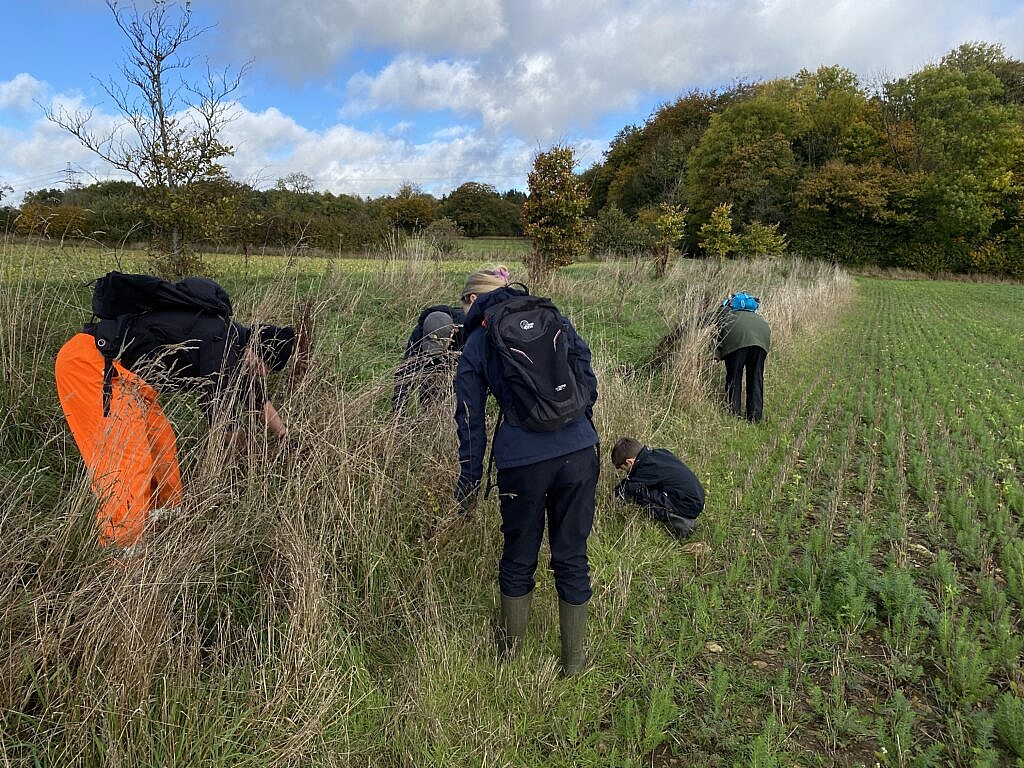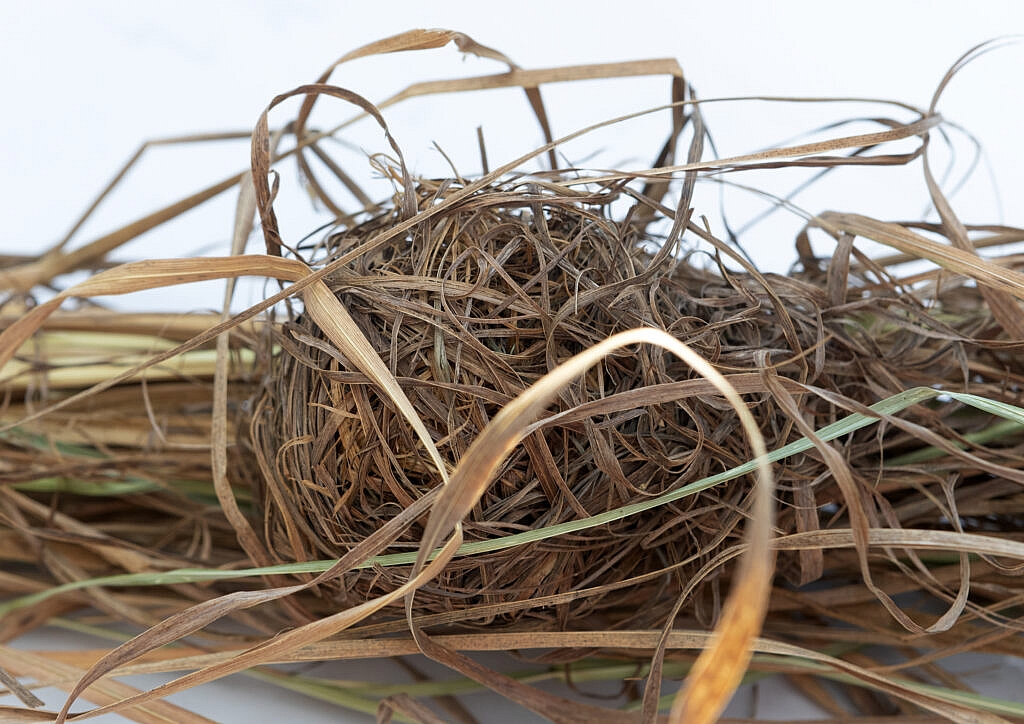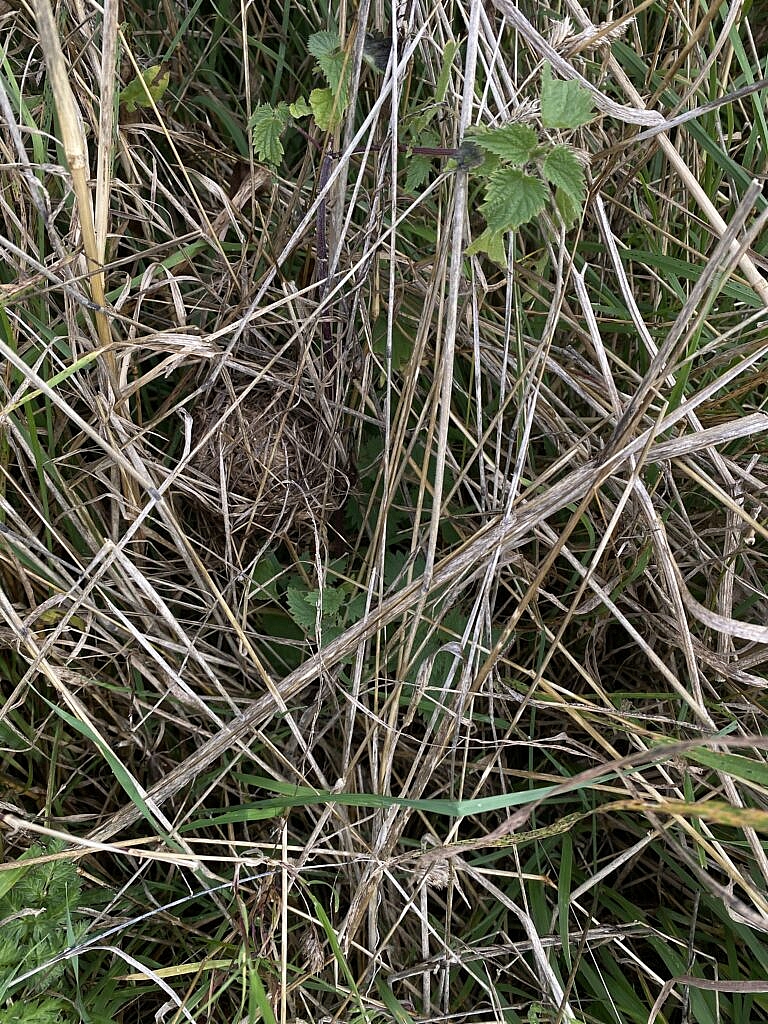Well, it was nice while it lasted, but Summer has definitely gone now, and the perennial challenge of entertaining bored children on a wet weekend has returned. But what if I said you could have an exciting day out with them that costs nothing? And how much better would that get if I said that you could do some science – some actual, honest-to-goodness science – while you were at it?
Well, you can. October 24th-30th is National Mammal Week,
so I spent last Sunday morning in the company of a group of people doing exactly that, when I joined one of the Mammal Society’s annual harvest mouse surveys. Doing a ‘survey’ sounds like something complicated. But if I said “we’re going on a nest hunt, we’re going to find a small one,” it might sound a lot better. And that’s exactly what we were doing.

Now harvest mice are small. Really small. Their scientific name is ‘Micromys minutus’ which roughly translates out as “really tiny mouse”. They weigh somewhere around 7grams, which is about the same as a postcard; and they are about 10cm long (half body, half tail) which means that the whole mouse is about as long as the short side of a postcard, too. They are Europe’s smallest rodent, and they live their lives in long, tussocky grass and hedgerows, where they eat mainly seeds and berries. Fortunately, harvest mice aren’t endangered globally, but they are not doing so well in Britain, so it’s important to find out where they are, and how many there are.
Now if you’re a bit, well, eeeeky about mice, you don’t need to be worried about harvest mice, because you’re very unlikely indeed to ever see one. I once spoke to one of the country’s leading experts, who had spent 40 years studying harvest mice. He’d only ever seen one – from behind, as it was running away. Almost every picture you’ll see of a harvest mouse is a pet one. So, if we never see the mice, how do we know where they are? The answer is that we look for their nests. And those nests are something pretty special.
![harvest mouse [captive] on wheat stalk Harvest mouse [captive] on wheat stalk. Image credit: Greg Newman /Pixabay](https://stevedeeley.com/wp-content/uploads/2022/10/harvest-mouse-gd04e0c25b_1920-768x1024.jpg)

Although they often build more than one nest a year (and can build nests as late as December if it’s mild enough), by the end of October harvest mice have usually finished breeding and are thinking about getting ready for winter. They drop to the ground and start to live in tunnels and runs beneath the grass, leaving their nests behind for us to find.
For our survey our group searched the long grass bordering the edge of a field, carefully parting thick tussocks of grass to look for nests hidden away inside. It took only 15 minutes of careful searching before we found our first one. After being checked by our Mammal Society expert to make sure that there were no babies inside, we all got to see this incredible little ball hidden away in the grass.

Once you’ve learned what they look like, nests become easier to find, and nest-hunting quickly gets competitive, with a race to see who can find the next one. In the end, our small group found six nests, all in an area where nobody had ever surveyed for harvest mice before, which meant that we were contributing new records to the national recording scheme. And the best bit was that some of the children got to take a disused nest home.
So the next time you’re stuck for something to do on a rainy weekend, why not see if there is a harvest mouse survey running near you? You can find out more and contact your local co-ordinator here: https://www.mammal.org.uk/science-research/harvest-mouse-project/.
Or, once you’ve learned what to look for, why not go out with your family and friends and look for some yourself? If you find any, record the location (you can use the Mammal Society’s free ‘mammal mapper’ app on your phone) and you’ll be helping to protect the future of these fantastic little mice.



1 comments On What can you do with the children on wet weekend?
7 grams! Wow, what a cutie ? Will search the grassy strip by our allotment next time we’re there.
Comments are closed.